 Most viewed - KYOTO 京都府 Most viewed - KYOTO 京都府 |
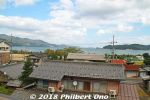
View from the Aomatsu train.46 viewsKyoto Tango Railway has another cafe train named "Akamatsu" that runs twice a day (except on Tue. and Wed.) between Nishi-Maizuru and Amanohashidate. But this train requires reservations.
https://trains.willer.co.jp/matsu/akamatsu.html
There's also the "Kuromatsu" restaurant train that runs on Fri., Sat., Sun., and national holidays. You can order a full dinner or confections or sake. The train fare includes the meal or drinks and obviously will be much more expensive than regular train fare.
https://trains.willer.co.jp/matsu/
|
|
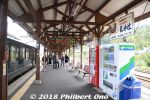
Amanohashidate Station46 views
|
|
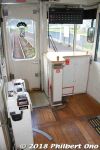
46 views
|
|

Some of the finest Uji matcha powder at Horii Shichimeien.45 views
|
|

Matcha tea leaves to be ground.45 views
|
|

Tourists visiting Byodo-in temple can also experience and taste Uji tea at nearby Takumi no Yakata (匠の館).45 views
|
|

Our tea-making kit. Everything is provided.45 views
|
|

In the end, we could even eat the used tea leaves which tasted like spinach maybe.45 views
|
|

In 1738, Nagatani Soen basically invented sencha green tea by using a kneading process for young tea leaves. He used a hot drying plate called hoiro to knead the steamed tea buds by hand to dry them. The process is called aosei sencha seiho. 45 views
|
|
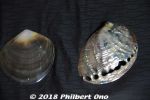
Pearly shells used in their fabrics.45 views
|
|

How Amanohashidate sandbar formed. Sand from the east coast of Tango Peninsula carried by ocean currents were repeled by the river current of the Noda River. The sand thereby accumulated from the northern end to enclose the bay.45 viewsUnderwater, Amanohashidate looks like a sand wall.
|
|
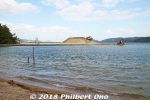
Amanohashidate's finger of sand that keeps growing. Every few years, they have to remove the excess sand, otherwise it will become another sandbar impeding shipping.45 views
|
|
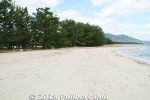
Beach on the east side of Amanohashidate.45 views
|
|
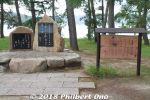
Amanohashidate poetry monument for famous travel poet Yosano Akiko and husband Yosano Tekkan. 与謝野 鉄幹(与謝野 寛)、与謝野 晶子45 views
|
|
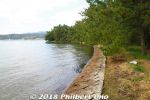
West side of Amanohashidate with no beaches.45 views
|
|
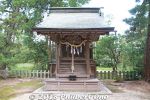
Amanohashidate Shrine45 views
|
|

45 views
|
|
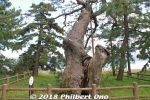
45 views
|
|
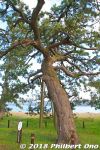
Pine tree for the sawn maiden's clothes. 羽衣の松45 views
|
|
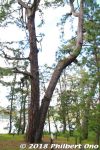
Looks like another wedded pair of pine trees, but it is named "Good Friends pine trees." なかよしの松45 views
|
|
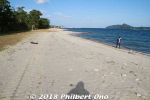
Sunny beach on Amanohashidate.45 views
|
|
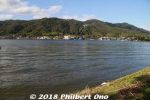
East edge of Amanohashidate looking toward Kasamatsu Park on the hill.45 views
|
|
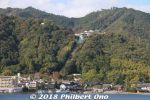
Kasamatsu Park on the hill as seen from Amanohashidate.45 views
|
|
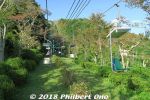
Chair lift to Kasamatsu Park. 45 views
|
|
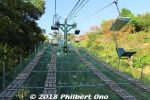
Chair lift to Kasamatsu Park. 45 views
|
|

Cable car if you're afraid of heights.45 views
|
|
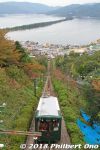
Cable car to Kasamatsu Park.45 views
|
|
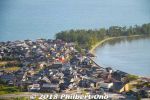
45 views
|
|
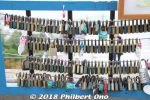
Padlocks for lovers.45 views
|
|
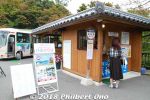
Bus stop to Nariaiji temple further up the hill, one of the 33 Saigoku Kannon Pilgrimage Temples.45 views
|
|
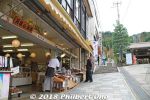
Souvenir shops near the chair lift station at Fuchu Station.45 views
|
|

Moto-Ise Kono Shrine (元伊勢籠神社)45 viewsIse Grand Shrines (Ise Jingu) in Mie Prefecture are Japan's most sacred Shinto shrines. They are dedicated to the Sun Goddess Amaterasu (Shinto's most important goddess and legendary ancestor of the Imperial family) and Toyouke-Omikami (豊受大神), goddess of agriculture.
|
|
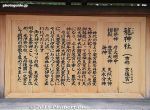
About Moto-Ise Kono Shrine (元伊勢籠神社). 45 viewsBefore Ise Jingu was established around the 7th century (or earlier), a number of shrines for these two deities were temporarily or permanently established in various locations including this Kono Shrine. These pre-Ise Jingu shrines are prefixed with "Moto-Ise." Kono Shrine worships five gods and one of them is Toyouke-Omikami (豊受大神), the same goddess of agriculture worshiped in Ise.
|
|
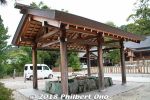
Purify yourself here.45 views
|
|

45 views
|
|
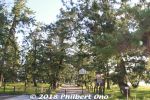
Entrance to Amanohashidate's northern end.45 views
|
|
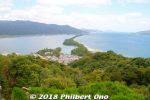
45 views
|
|
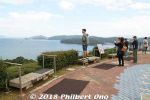
Platforms where you supposed to view the sandbar upside down. 45 views
|
|
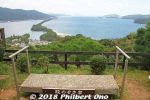
Platform to view the sandbar upside down. 45 views
|
|
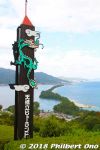
On the southern end here, Amanohashidate upside down looks like a flying dragon (hiryu 飛竜). 45 views
|
|
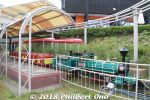
Besides having lookout decks, Amanohashidate Viewland is a small amusement park for kids.45 views
|
|
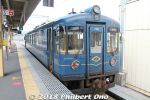
The Aomatsu train runs once every morning (10:17 am) and afternoon (3:17 pm) from Fukuchiyama Station to Amanohashidate Station and requires no reservations or extra train fare.45 views
|
|
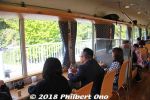
Window seats at the counter.45 views
|
|
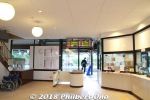
Inside Amanohashidate Station. Nice station with luggage lockers and English-speaking tourist information desk.45 views
|
|
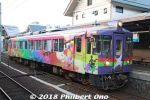
Amanohashidate area has all these neat, painted trains.45 views
|
|
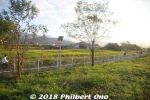
On the train back.45 views
|
|

We then got to see Horii Shichimeien's matcha tea factory. (Note that this is not open to normal tourists.)44 views
|
|

Grinder face44 views
|
|

Entrance to Takumi no Yakata (匠の館).44 views
|
|

Inside Takumi no Yakata. Like a workshop or classroom for making tea.44 views
|
|

His birthplace house is a replica in Yuyadani, Ujitawara. Open only on Sat. and Sun. 44 views
|
|

Grid underneath the hoiro.44 views
|
|
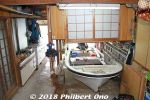
In the back of the car garage is the boat garage on the water's edge. The small fishing boat is hoisted and secured by a power winch. 44 viewsAbove the boat is just storage space (not another room). The family uses the boat to catch fish for themselves.
|
|

Tango Matsushima (pine islands).44 views
|
|
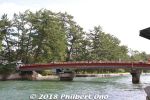
Rotating bridge for pedestrians again.44 views
|
|
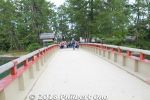
Rotating bridge for Amanohashidate.44 views
|
|

About Amanohashidate's pine trees.44 views
|
|
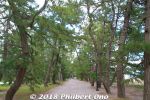
Cycling on Amanohashidate through thousands of Japanese pine trees. It takes 10-15 min. by bicycle without stopping. But there are a number of monuments, shrine, commemorative pine trees, and beaches to photograph along the way. So it took me 30-40 min.44 views
|
|
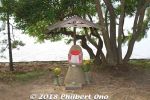
44 views
|
|
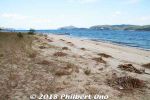
This part of the beach had many little piles of driftwood which they were cleaning up.44 views
|
|
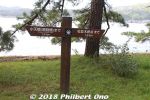
Good to know how far away you are.44 views
|
|
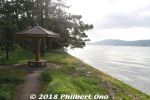
44 views
|
|
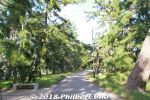
44 views
|
|
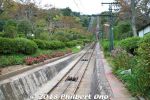
Cable car to Kasamatsu Park.44 views
|
|
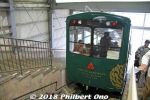
Arriving Kasamatsu Park on cable car.44 views
|
|
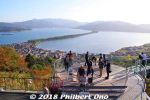
Amanohashidate as seen from the northern end atop Kasamatsu Park.44 viewsAmanohashidate is a sandbar created since thousands of years ago by opposing ocean currents carrying sand. According to Japanese mythology, Amanohashidate was created during the age of gods (before man appeared). The great god Izanagi in Heaven, built a long floating ladder-bridge from Heaven to Earth so he could see his wife the goddess Izanami who was living at Moto-Ise Kono Shrine on Earth. However, in a single night while he was asleep, the bridge collapsed and fell to Earth, where Amanohashidate is today. And so if you view it upside down at Kasamatsu Park, it's supposed to look like a bridge to heaven which is what "Amanohashidate" means.
|
|
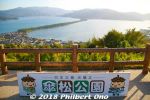
Amanohashidate as seen from the northern end atop Kasamatsu Park.44 views
|
|

44 views
|
|
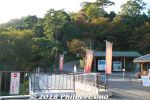
44 views
|
|
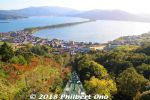
44 views
|
|
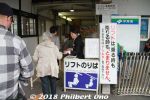
Entrance to chair lift to go down from Kasamatsu Park.44 views
|
|
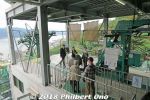
Chair lift to go down from Kasamatsu Park.44 views
|
|
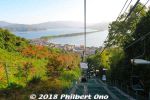
Chair lift down from Kasamatsu Park has nice views.44 views
|
|
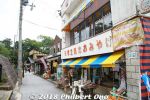
Path to nearby Moto-Ise Kono Shrine is lined with souvenir shops.44 views
|
|
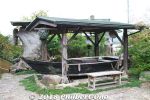
44 views
|
|
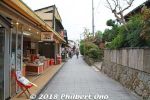
Path to nearby Moto-Ise Kono Shrine.44 views
|
|

Moto-Ise Kono Shrine torii. No photos beyond this torii.44 views
|
|
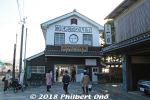
Boat dock on the northern end to cross by boat if you don't want to cycle.44 views
|
|
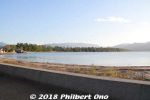
Amanohashidate44 views
|
|
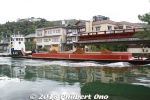
Ship coming through.44 views
|
|

On the southern end here, Amanohashidate upside down looks like a flying dragon (hiryu 飛竜). 44 views
|
|
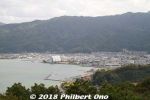
44 views
|
|
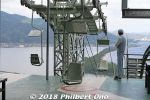
Chairlift down.44 views
|
|
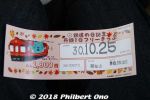
This Kyoto Tango Railways one-day train pass is a good deal.44 views
|
|

Stone grinders grinding matcha tea leaves into fine matcha power at Horii Shichimeien's tea factory. Watching these grinders was mesmerizing..43 views
|
|

Takumi no Yakata was where we could make our own tea (with careful instructions).43 views
|
|

Nagatani Soen's birthplace home (replica).43 views
|
|

43 views
|
|
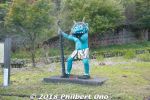
Fukuchiyama also has the Oeyama Mountains, a long mountain range from the neck of the Tango Peninsula to Fukuchiyama. Oeyama is famous for oni (demon, ogre) legends. 43 viewsNear the foot of Oeyama in Fukuchiyama, you may see oni statues like this one.
|
|
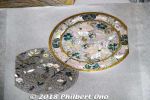
It's a painstaking, time-consuming process.43 views
|
|
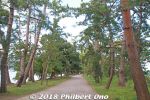
43 views
|
|
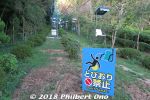
If you're not afraid of heights, take the chair lift. They keep telling you not to jump off even if you dropped something.43 views
|
|
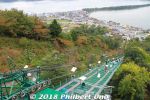
Chair lift to Kasamatsu Park. 43 views
|
|
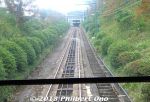
Cable car to Kasamatsu Park.43 views
|
|
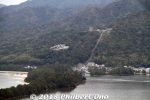
Southern end of Amanohashidate. Amanohashidate Viewland can be seen.43 views
|
|
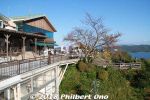
43 views
|
|
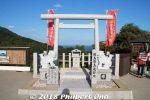
43 views
|
|
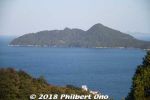
43 views
|
|
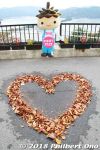
Autumn heart at Amanohashidate.43 views
|
|
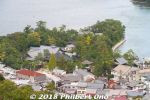
Chionji Temple43 views
|
|

42 views
|
|

Our instructor (on the left).42 views
|
|

Our tea-making kit. 42 views
|
|

Nagatani Soen's birthplace is not easily accessible unless you have a car.42 views
|
|
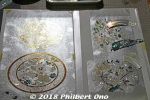
First they attach the thin shell/pearly layers on a design on washi paper.42 views
|
|
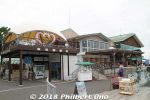
Kasamatsu Park has the usual touristy restaurants and shops. Nice benches and no amusement park.42 views
|
|
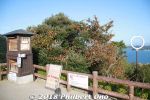
Another Ring of Wisdom on Kasamatsu Park.42 views
|
|

How Amanohashidate was formed, according to mythology.42 views
|
|
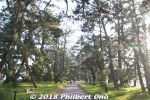
42 views
|
|
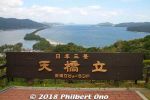
Amanohashidate from Amanohashidate Viewland (southern end).42 views
|
|
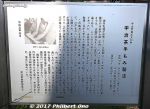
41 views
|
|

Another cup.41 views
|
|

Inside Nagatani Soen's birthplace home (replica). There's a video explaining the process.41 views
|
|

Blessed with rolling hills and clear streams, Wazuka produces about 40 percent of Kyoto's Uji tea production. Wazuka is most suited for tea cultivation because there is a large temperature difference between night and day.41 views
|
|

This is the Ishitera area of Wazuka (pop. 4,226 as of Feb. 2016), a small town in southern Kyoto with about 301 Uji tea farmers.41 views
|
|

Fog thereby forms over the tea plants to shade them from the strong sunlight. Tea plants also grow best in well-drained soil, hence the tea plants on sloping land.41 views
|
|

41 views
|
|

41 views
|
|

Tofukuji is a Zen Buddhist temple famous for red maple leaves. Quite spectacular and photogenic landscapes. One of the five great Zen temples of Kyoto. 41 viewsTofukuji temple is the easiest way to see autumn leaves in Kyoto. From Kyoto Station, it's only one train stop (JR Nara Line) away (get off at Tofukuji Station and walk 10 min.). But the trains get sardine-packed in the morning. Expect large crowds during late Nov.
|
|
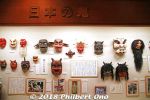
These are oni masks from all over Japan. Very impressive collection of everything oni.41 views
|
|
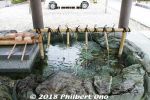
41 views
|
|

Hot water thermos.40 views
|
|

First cup of tea.40 views
|
|

40 views
|
|

40 views
|
|

40 views
|
|
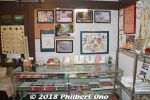
Inside Kurotani Washi Kaikan gift shop.40 views
|
|
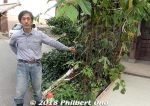
Kurotani washi mainly uses kozo or mitsumata mulberry plants as the raw material. This is our Kurotani washi guide showing us the kozo plants that can grow to three meters high.40 viewsThey are harvested in autumn by cutting the trunks or branches. They grow kozo mulberry near Ayabe Station. Kozo is called "kago" in Kurotani.
|
|
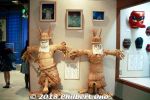
40 views
|
|

Kotohira Shrine's head priest Wakisaka Takuji (宮司 脇坂卓爾) explained it to us.40 views
|
|
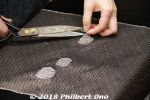
Working on an obi sash. 40 views
|
|

Present main temple hall built in 1884.39 views
|
|

First floor of pagoda.39 views
|
|

39 views
|
|

Slow Life Cafe39 views
|
|

Kamikoma is a neighborhood of about 40 Japanese tea wholesalers. There is some traditional buildings, and only one or two buildings where the public can enter.39 views
|
|

39 views
|
|
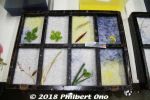
A few people even embedded leaves.39 views
|
|
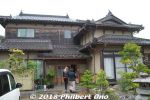
Tango chirimen silk fabric maker Tamiya Raden (民谷螺鈿).39 views
|
|
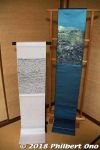
Tamiya Raden also makes kimono obi sashes.39 viewsThey also supply fabrics to world-famous luxury brands, but they can't brag about it because of a non-disclosure agreement.
|
|
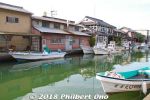
39 views
|
|
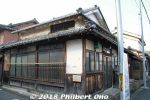
39 views
|
|

Our volunteer tour guide.38 views
|
|

Kaijusenji's five-story pagoda is a National Treasure, built in 1214.38 views
|
|

38 views
|
|

38 views
|
|
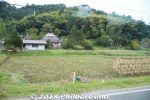
This is a farmhouse lodge (農家民宿) where we stayed in the city of Ayabe. It fronts rice paddies. The farmhouse lodge owner can pick you up at JR Ayabe Station.38 views
|
|
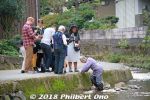
While soaking, the kozo bark is also kneaded by human feet to soften it. The water is cold, and it's a traditional job for the grandmas.38 views
|
|
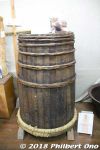
To make the paper fibers for washi, there are many laborious steps. After the kozo branches are cut in even lengths, they are stuffed in a barrel (koshiki) like this and placed over a boiling and steaming iron pot for three to four hours 38 viewsto soften the brown bark.
|
|

Fukuchiyama Castle was mainly built by Akechi Mitsuhide in 1579 after he conquered this region for Oda Nobunaga.38 views20-min. walk from JR Fukuchiyama Station. Open 9 am–5 pm, closed Tue. and Dec. 28th–31st, Jan. 4th–6th. Map: https://goo.gl/maps/8ZY7HHrDvoC2
|
|
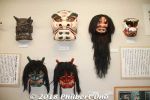
"Oni" has no real equivalent word in English. It's usually a fearsome or hellish figure with negative connotations. It always has horns on the head, but it's not really a devil. 38 viewsOni are generally perceived to be mean, cruel, evil, or bad luck. So if someone calls you an "oni," it means you're mean, cruel, or always angry. But there may be protective and benevolent ones as well.
|
|
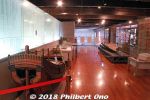
Maizuru World Brick Museum on the upper floor. Exhibits local historical artifacts. There's no English though.38 views
|
|

Built in the Nara Period, Kaijusenji is a Chisan-ha Shingon Buddhist temple. It worships an eleven-face Kannon statue. 37 views
|
|

37 views
|
|

37 views
|
|

37 views
|
|

Lesser shrines.37 views
|
|

Might be the priest's residence.37 views
|
|

37 views
|
|

37 views
|
|

37 views
|
|

37 views
|
|

37 views
|
|
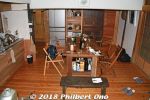
Kitchen and dining room. Totally renovated and modern on the inside, with a modern kitchen, toilet, and bath. 37 views
|
|
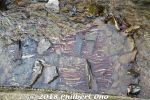
While the kozo branches are still hot, elderly ladies twist and strip off the brown bark (kuro-kawa 黒皮). The bark is dried, then soaked in river water like here.37 views
|
|
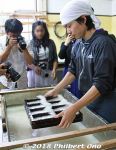
Dump the postcard mold into the vat and swish it left/right and forward/back evenly.37 views
|
|
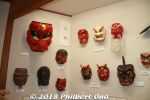
Tengu goblin masks.37 views
|
|
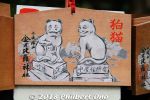
Koma-neko ema prayer tablet.37 views
|
|
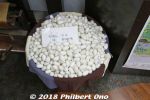
This is 3,000 silk cocoons. That's how much silk is needed to make silk fabric for one kimono. One cocoon has 1200–1500 meters of silk thread. 37 viewsSince Japan produces very little silk, most are imported from China and Brazil. The Tango region consumes about one-third of Japan's raw silk imports. We were told the quality of silk from China and Brazil is very good.
|
|
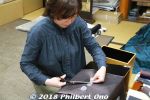
Working on an obi sash. 37 views
|
|
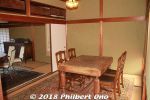
Private dining room.37 views
|
|
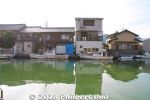
The homes used to have built-in boat garages like at Ine, but they were abolished and the boats are moored right in front instead. 37 views
|
|
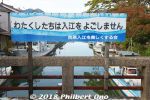
Walk until this bridge going over the inlet. Banner says, "We won't pollute the inlet."37 views
|
|
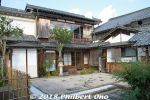
37 views
|
|

36 views
|
|

36 views
|
|

36 views
|
|

36 views
|
|

36 views
|
|

36 views
|
|

We were served tea.36 views
|
|

36 views
|
|

36 views
|
|
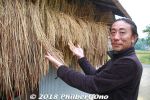
The 42-year-old owner, Kushida Kampei (櫛田寒平) moved to Ayabe from Tokyo seven years ago. He has his own rice paddies and other plots to grow his own rice and vegetables. 36 views
|
|
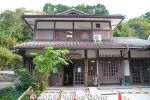
Kurotani village has this Kurotani Washi Kaikan gift shop (黒谷和紙会館). Kurotani is not touristy because it's not convenient to get here.36 views
|
|
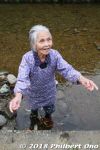
She's Horie Sayo, 86 years old, been doing it since her teens. 36 views
|
|
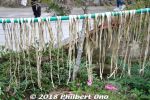
The brown kozo bark is shaved and scraped with a knife by hand to remove the brown bark skin and other blemishes. Then the becomes thin, white strips that are dried in the sun. (shiro-kawa 白皮)36 views
|
|
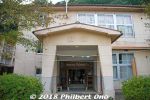
Also visited Kurotani Washi Kougei No Sato (Kurotani Washi Craft Village 黒谷和紙 工芸の里) a 20-min. car ride away.36 viewsThey were using an old elementary school.
|
|
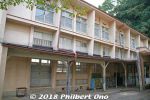
They use the 1st floor for making paper, while the second floor are washi exhibition rooms.36 views
|
|
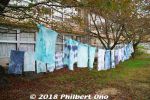
36 views
|
|
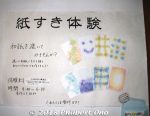
They offer washi papermaking lessons for ¥1,300 including admission.36 views
|
|

The postcards looked quite thick out of the mold, but they would get much thinner when dried.36 views
|
|
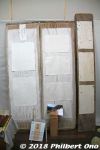
The washi shets are dried on wooden boards.36 views
|
|
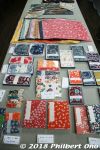
36 views
|
|
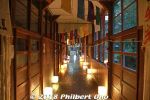
36 views
|
|
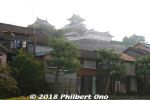
36 views
|
|
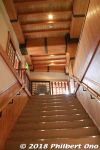
Inside the castle tower is a modern building housing a local history museum. Photography is not allowed inside the castle museum.36 views
|
|
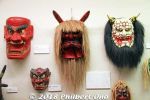
36 views
|
|
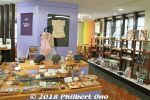
First we saw Tayuh Textile Co.'s gift shop and showroom.36 views
|
|
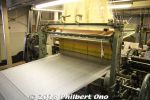
36 views
|
|
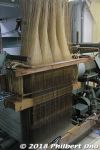
36 views
|
|
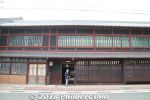
Another stop was a Tango chirimen wholesaler named Yoshimura Shouten (株式会社 吉村商店 峰山支店). 36 viewsFounded in 1830 and based in Kyoto city, this is their branch shop in in Mineyama, Kyotango.
|
|
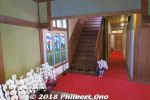
Shoeikan entrance hall.36 views
|
|
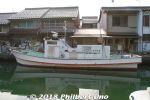
36 views
|
|
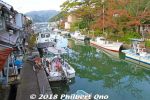
36 views
|
|
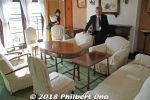
Western-style (Spanish) 2nd floor living room.36 views
|
|
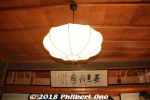
36 views
|
|
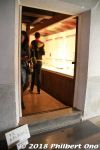
Exhibits in the kura storehouse.36 views
|
|

Kaijusenji's five-story pagoda is a National Treasure.35 views
|
|

35 views
|
|

35 views
|
|

35 views
|
|

35 views
|
|

35 views
|
|

35 views
|
|

35 views
|
|

We could go inside this building.35 views
|
|

35 views
|
|

35 views
|
|
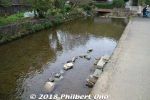
35 views
|
|
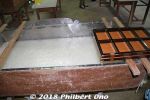
A large vat (sukifune) filled with washi fibers floating evenly in the water. The fibers are mixed in with a plant-based adhesive so they don't sink to the bottom and they also cling together to make the paper. 35 viewsA wooden mold (keta 桁) to make eight postcards on the right. Kurotani washi bills itself as Japan's strongest paper. In the 1920s, Kurotani washi was tested for strength and was declared the strongest washi in Japan. I was told Kurotani's kozo has longer fibers than other species so the paper is stronger.
|
|
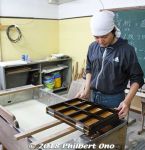
Our instructor first showed us how it was done. He used a mold to make eight washi postcards. 35 views
|
|

About sugeta.35 views
|
|
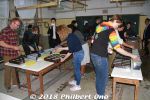
Afterward, we could decorate our postcards with colored ink/fibers.35 views
|
|
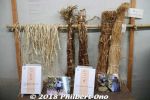
This shows how they typically hang and dry the white strips and bark strips.35 views
|
|
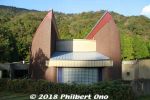
Japanese Oni Exchange Museum exhibits oni (demon, ogre) artwork and local oni legends of the Oeyama Mountains. Masks, statues, kawara roof tile ornaments, and paintings of oni from all over Japan and some from overseas. 35 viewsAll donated to the museum. The museum is at the foot of the Oeyama Mountains (大江山). The Oeyama mountains are known for famous oni legends. That's why this museum was built here.
|
|
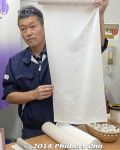
He showed us the finished product, a chirimen fabric with a woven design.35 views
|
|
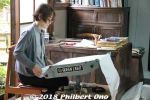
Chirimen fabric inspector uses a light box to carefully check for any defects and flaws in the material. Any defects in the material will reduce its value and the fabric (or kimono) will be sold for less.35 views
|
|
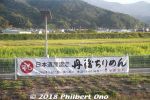
Banner commemmorating the 300th anniversary of Tango chirimen in 2018.35 views
|
|
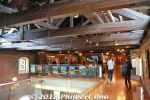
The museum is on the upper level.35 views
|
|
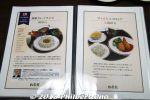
The restaurant's menu is quite cheap, prices ranging from ¥900 for Navy curry rice to ¥4,500 for a full course.35 views
|
|
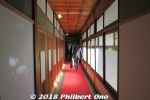
We could also go upstairs and tour the private dining rooms.35 views
|
|
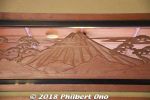
The private dining rooms are quite ornate with carved transoms like this one of Mt. Fuji.35 views
|
|
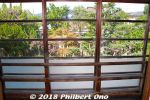
Garden view from a private dining room.35 views
|
|
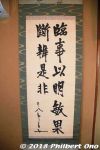
35 views
|
|
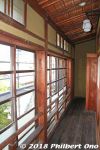
35 views
|
|
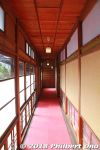
35 views
|
|
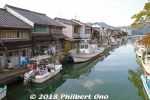
35 views
|
|
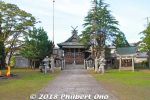
Next to the bridge is this local Shinto shrine named Minazuki Jinja dedicated to Tsukuyomi (月夜見命), the Moon deity and younger brother of Sun Goddess Amaterasu. 水無月神社35 views
|
|
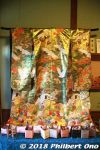
Kimono displayed in Izutsuya ryokan.35 views
|
|
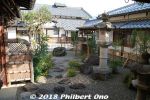
Inner courtyard35 views
|
|
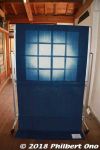
35 views
|
|
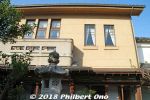
The first floor was Japanese style, while the second floor was Western-style (Spanish).35 views
|
|

34 views
|
|

34 views
|
|

34 views
|
|

34 views
|
|

34 views
|
|

34 views
|
|
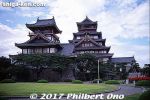
Reconstruction of Fushimi Castle when it was still open to the public from 1964 to 2003. It was a museum about Toyotomi Hideyoshi who built the original Fushimi-Momoyama Castle. This was the main attraction of a small theme park called "Castle Lan.&q34 views
|
|

34 views
|
|

View from Fushimi Castle.34 views
|
|
| 2715 files on 11 page(s) |
 |
 |
 |
9 |  |
|